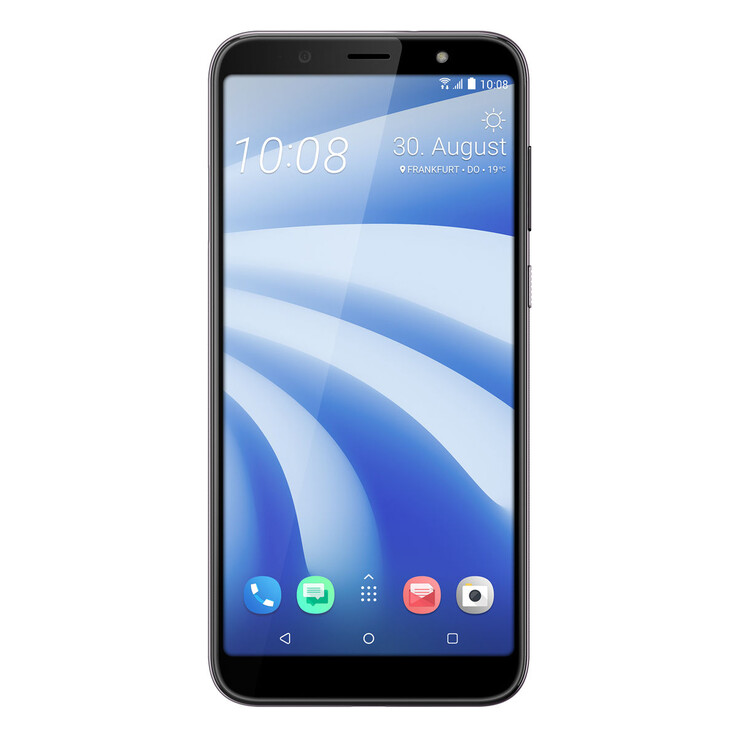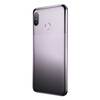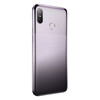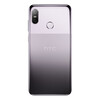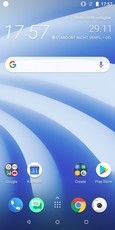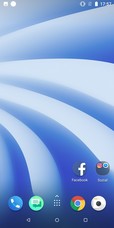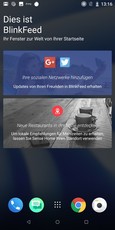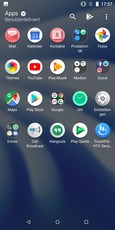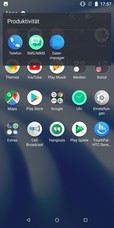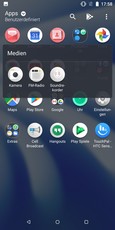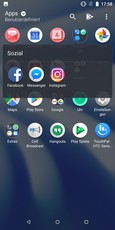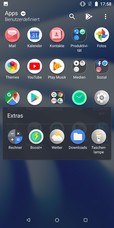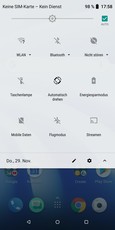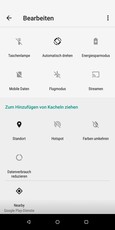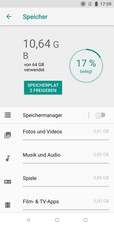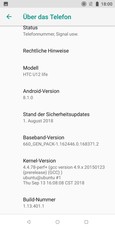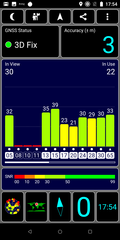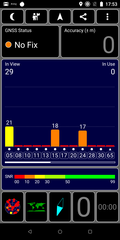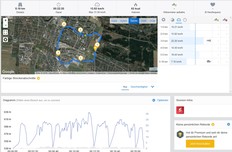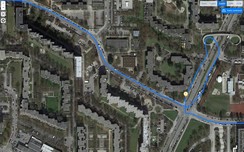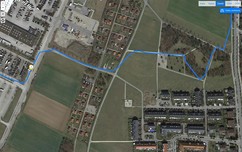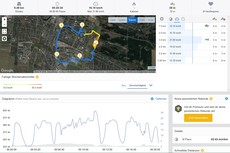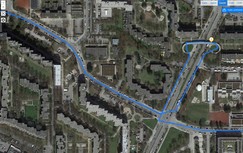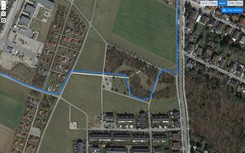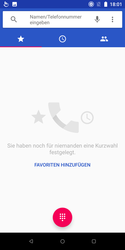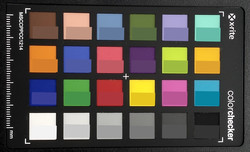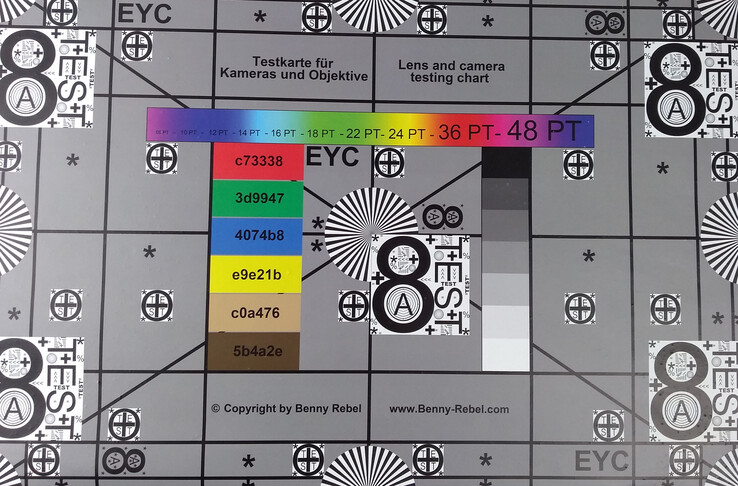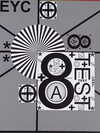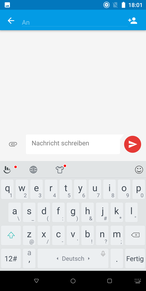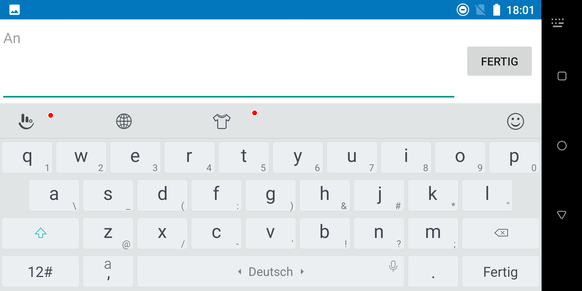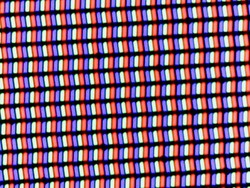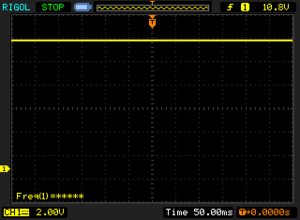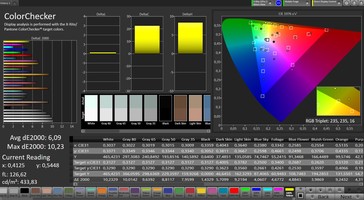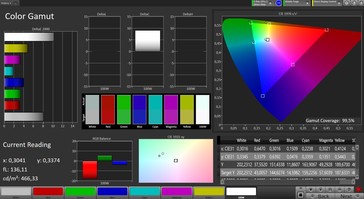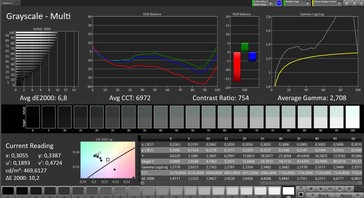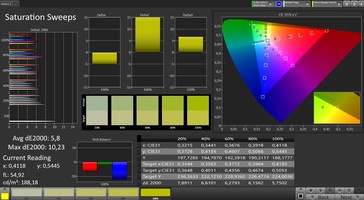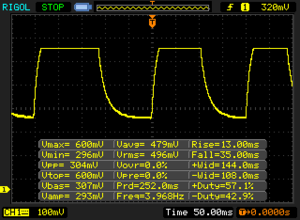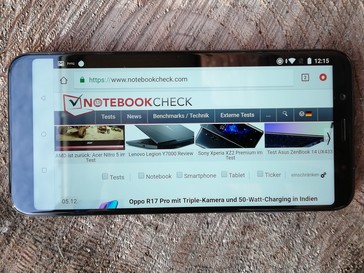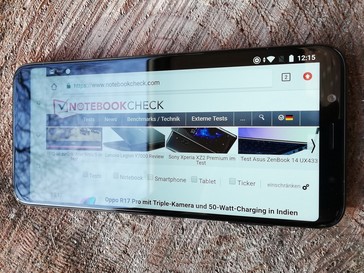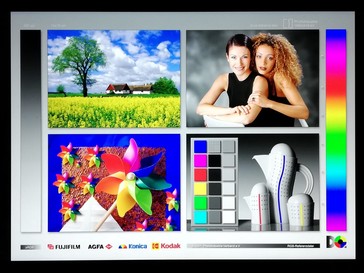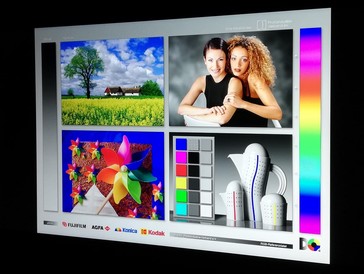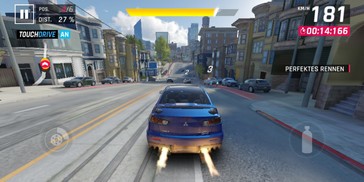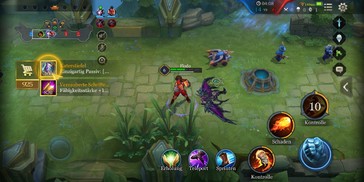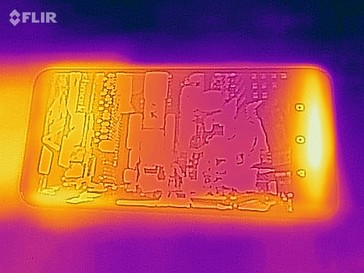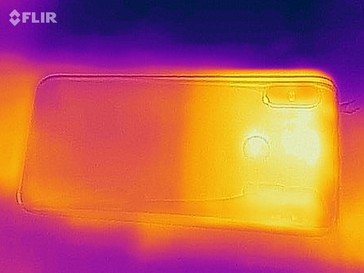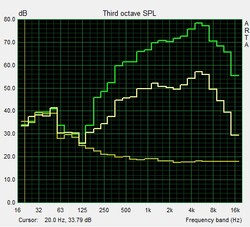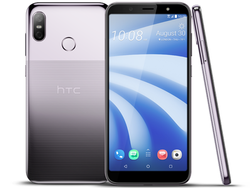HTC U12 Life Smartphone Review
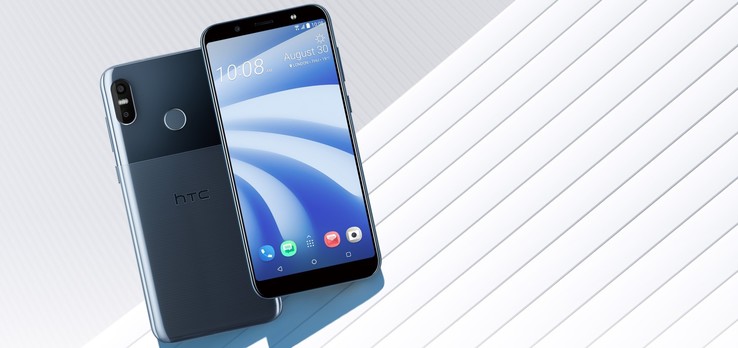
The predecessor, the U11 Life, was still based on Android One, and all updates and security patches were provided by Google. For today’s review unit, HTC seems to have reconsidered this step and reinstated its own Sense user interface on the U12 Life again.
Performance-wise, the device is equipped quite decently. A Qualcomm Snapdragon 636 combined with an Adreno 509, 4 GB of RAM, and 64 GB of eMMC storage should make for ample performance. Optionally, the device can also be purchased with 8 GB of RAM and 128 GB of eMMC storage.
The competition is quite numerous in the U12’s price range of around $300. The contenders we picked include the U12’s own predecessor, the U11, as well as other similarly equipped devices: the Nokia 7.1, the Umidigis Z2, and the Samsung Galaxy A6 2018.
Case
HTC refers to the U12 Life’s exterior as “Liquid Surface”, and it is available in two distinct colors: “Midnight Blue” and “Twilight Purple”. The backside and the sides are constructed of a single piece of acrylic glass covered with a skid-proof layer with horizontal stripes for additional grip on flat surfaces and in your hands. Overall, the U12 left a very robust and sturdy impression, and it should withstand drops with nothing more than a few minor scratches. External pressure and torsional forces did not seem to have too much of an effect on the device either. It should be just fine in your pocket or even your backpack when tossed in-between a plethora of other stuff.
The side bezels are very narrow, yet top and bottom are very pronounced in return. The bottom remained free of input devices and other smartphone components while the top houses the speaker, the front-facing selfie-camera, and an LED flash. All physical buttons are located on the right-hand side, sitting firmly in their respective individual indentations. The left-hand side contains the nanoSIM/microSD slot. Overall, build quality was of a very high quality.
Given that the U12 featured the biggest display of all devices in our test group it was also the largest and with 175 g (~6.2 oz) also the heaviest device of the bunch. However, it remained fairly compact for a 6-inch smartphone.
Connectivity
The HTC U12 Life is equipped with Qualcomm’s Snapdragon 636 mid-range SoC as well as an integrated Adreno 509 GPU. Combined with 4 GB of RAM and 64 GB of eMMC storage it should offer plenty of performance for everyday applications and tasks and even satisfy more demanding requirements.
Storage can be expanded via microSD, however by doing so you are going to lose the secondary nanoSIM slot. Wired data transfers can be achieved via the single USB-C port at the bottom of the device. Unfortunately, it is only connected to a USB 2.0 bus but it does support USB-OTG features, such as charging external devices, in return. The U12 also marks the return of the 3.5-mm headphone jack, which was suspiciously missing on its U11 predecessor. It supports external speakers as well as headsets.
Software
The operating system is HTC’s own Sense UI on top of Android Oreo 8.1 with security patches as of August 1, 2018. The user interface is very similar to pure Android, and the major differences are the news screen called “BlinkFeed”, a few updates icons, and a number of preloaded apps. The latter can neither be uninstalled nor deactivated.
Should you be interested in Android’s multi-user capabilities you will be glad to hear that multiple users can be easily configured in the U12’s settings menu. While storage is expandable, microSD cards can only be formatted as external storage, and are thus not available for offloading applications. Accordingly, they can only be used for media files.
Communication and GPS
HTC’s U12 Life supports cellular connections in 2G, 3G, and 4G/LTE networks. Thanks to support for LTE Cat. 11 it tops out at 600 and 75 Mbit/s downstream and upstream transfer rates, respectively. We have not had any problems with cellular connectivity during our review period.
In addition to NFC and Bluetooth the HTC smartphone also supports 802.11 a/b/g/n/ac Wi-Fi. According to our benchmarks, its Wi-Fi performance was decent and on a par with, yet second to, the Nokia 7.1 (RX) and the HTC U11 Life (TX).
| Networking | |
| iperf3 transmit AX12 | |
| HTC U11 Life | |
| HTC U12 Life | |
| Nokia 7.1 | |
| Samsung Galaxy A6 2018 | |
| Umidigi Z2 | |
| iperf3 receive AX12 | |
| Nokia 7.1 | |
| HTC U12 Life | |
| HTC U11 Life | |
| Umidigi Z2 | |
| Samsung Galaxy A6 2018 | |
We test GPS accuracy with an app called “GPS Test”. Outdoor GPS accuracy was determined to be a very decent 3m (~10 ft). Unfortunately, we were unable to obtain GPS lock indoors at all. Supported location services include GPS and GLONASS.
In addition to the GPS Test app, we also take every device on a quick bike tour around the block, and compare it to a professional Garmin Edge 520 satnav. On long straights, the U12 was fairly accurate and placed us very close to the actual track. Bends and changes of directions were registered rather slowly, and accordingly the recorded track differed quite drastically from the actual track in these situations. All things considered we were not particularly impressed with the U12’s GPS capabilities.
Telephony and Call Quality
HTC opted for Google’s well-known default telephony app. It features a dialpad, contacts, and a 'recents' list. Call quality was superb, and we were particularly impressed by the HTC’s high volume and clear transmission of voices. We should also add that ambient noise cancelling worked remarkably well.
The included headset was decent and very loud. Consequently, it remained usable even in very noisy environments.
Cameras
The HTC U12 Life is equipped with two cameras: a dual-lens 16+5 MP rear-facing camera with an aperture of f/2.0 and a 13 MP front-facing camera. The latter produced usable portrait photos with a lack of details, blurry edges, and pale colors. When zoomed in uniformly colored surfaces displayed a slight graininess. In addition to HDR and a beauty mode, the camera app also includes various presets as well as an auto-timer.
Panorama photos taken with the rear-facing main camera were somewhat decent, albeit we noticed problems with high dynamic range scenes. Darker, shady areas tend to be too dark, which means that objects contained within become practically invisible. On the other side of the lighting spectrum colors pop, details are acceptable, and edges blur even when not zoomed in. Good lighting conditions presupposed the camera’s close-range mode produced sharp photos with popping colors and well-defined edges. The Bokeh effect that HTC’s marketing singled out to promote works very well and puts noticeable emphasis on the chosen motive. This all quickly changes for the worse under less than ideal lighting conditions. While the camera manages to capture the objects it is pointed at, parts of the photo will be too dark to show any details whatsoever. And even if you manage to detect objects in the dark areas they will be very blurry. The preloaded camera app only allows for minor adjustment and image quality improvements. In addition to brightness, it contains an HDR and a panorama mode, as well as presets for landscape, sport, and night photography. The latter have almost no effect on the photos, though.
Overall video quality was comparable to the camera’s photo quality, and videos were smooth thanks to image stabilization. The only software feature is a panorama mode.
We test every camera in our lab under normalized conditions with the ColorChecker Passport. As you can see on the right, bright colors tend to be overexposed while dark colors tend be too dark. Dark grays turned out to be a bit too bright as well.
Under these normalized conditions we also take a photo of our test chart. Overall, colors were too dark and the photo was noticeably brighter towards the left edge. In addition, we noticed some paleness towards the bottom of the photo.
Accessories and Warranty
Included in the box are a modular USB charger with matching USB-C cable, a SIM tool, and a stereo headset with a 3.5-mm plug. Additional accessories tailored specifically to the U12 are not available.
Like all HTC smartphones released after May 1, 2016, the U12 comes with a 12-month warranty by default. Please see our Guarantees, Return policies and Warranties FAQ for country-specific information.
Input Devices and Handling
HTC’s keyboard application of choice is an app called “TouchPal”. It features large buttons and various customizations to tailor it to your individual liking. It can be further individualized via various themes. The U12’s touchscreen was very responsive and accurate, and its smooth display surface worked in favor of painless and trouble-free drag & drop operations. The integrated orientation sensor reacted very quickly to changes in orientation.
A fingerprint reader is located at the back of the HTC smartphone, and it worked very reliably. We have only had a few failed or delayed attempts during our entire review period.
Display
The U12’s 6-inch 18:9 IPS display runs at a native resolution of 2160 x 1080. Its average maximum brightness of 452 nits turned out to be slightly below average for its class, and a brightness distribution of 90% was just mediocre as well. The display utilizes PWM for brightness regulation, which could potentially cause eyestrain and headaches for sensitive users.
| |||||||||||||||||||||||||
Brightness Distribution: 90 %
Contrast: 755:1 (Black: 0.62 cd/m²)
ΔE ColorChecker Calman: 6.09 | ∀{0.5-29.43 Ø4.77}
ΔE Greyscale Calman: 6.8 | ∀{0.09-98 Ø5}
99.5% sRGB (Calman 2D)
Gamma: 2.708
CCT: 6972 K
| HTC U12 Life IPS, 2160x1080, 6" | HTC U11 Life SLCD, 1920x1080, 5.2" | Nokia 7.1 IPS, 2280x1080, 5.8" | Samsung Galaxy A6 2018 Super AMOLED, 1480x720, 5.6" | Umidigi Z2 IPS, 2246x1080, 6.2" | |
|---|---|---|---|---|---|
| Screen | 24% | 10% | 24% | -9% | |
| Brightness middle (cd/m²) | 468 | 545 16% | 577 23% | 453 -3% | 472 1% |
| Brightness (cd/m²) | 452 | 526 16% | 550 22% | 459 2% | 466 3% |
| Brightness Distribution (%) | 90 | 87 -3% | 91 1% | 93 3% | 76 -16% |
| Black Level * (cd/m²) | 0.62 | 0.42 32% | 0.36 42% | 0.44 29% | |
| Contrast (:1) | 755 | 1298 72% | 1603 112% | 1073 42% | |
| Colorchecker dE 2000 * | 6.09 | 4.9 20% | 7.4 -22% | 2.6 57% | 7.91 -30% |
| Colorchecker dE 2000 max. * | 10.23 | 8.5 17% | 15 -47% | 9.2 10% | 14.85 -45% |
| Greyscale dE 2000 * | 6.8 | 5.4 21% | 10.2 -50% | 1.6 76% | 10.6 -56% |
| Gamma | 2.708 81% | 2.31 95% | 2.29 96% | 2.07 106% | 2.417 91% |
| CCT | 6972 93% | 7610 85% | 9657 67% | 6356 102% | 9374 69% |
* ... smaller is better
Screen Flickering / PWM (Pulse-Width Modulation)
| Screen flickering / PWM not detected | |||
In comparison: 53 % of all tested devices do not use PWM to dim the display. If PWM was detected, an average of 8084 (minimum: 5 - maximum: 343500) Hz was measured. | |||
According to our measurements, the contrast ratio was just 755:1 due to an elevated black level of 0.62 nits. Both are significantly worse than on all other Android smartphones we compared the U12 Life to.
Our CalMAN analysis was more favorable, and colors turned out to be fairly balanced. Color temperature can be adjusted in the settings menu.
Display Response Times
| ↔ Response Time Black to White | ||
|---|---|---|
| 34 ms ... rise ↗ and fall ↘ combined | ↗ 13 ms rise | |
| ↘ 21 ms fall | ||
| The screen shows slow response rates in our tests and will be unsatisfactory for gamers. In comparison, all tested devices range from 0.1 (minimum) to 240 (maximum) ms. » 90 % of all devices are better. This means that the measured response time is worse than the average of all tested devices (20.2 ms). | ||
| ↔ Response Time 50% Grey to 80% Grey | ||
| 48 ms ... rise ↗ and fall ↘ combined | ↗ 13 ms rise | |
| ↘ 35 ms fall | ||
| The screen shows slow response rates in our tests and will be unsatisfactory for gamers. In comparison, all tested devices range from 0.165 (minimum) to 636 (maximum) ms. » 82 % of all devices are better. This means that the measured response time is worse than the average of all tested devices (31.6 ms). | ||
Performance
Thanks to its Qualcomm Snapdragon 636 SoC and Adreno 509 GPU the U12’s performance was very smooth. With 4 GB of RAM and 64 GB of eMMC storage, the device was equipped like a typical mid-range device capable of mastering most everyday applications and challenges.
Overall benchmark performance placed the U12 either at the top or in second place, depending on benchmark. It turned out to be very fast for a mid-range smartphone. Translated into everyday usage experience this means that the U12 remained very smooth and responsive throughout all of our tests.
| PCMark for Android | |
| Work performance score (sort by value) | |
| HTC U12 Life | |
| HTC U11 Life | |
| Nokia 7.1 | |
| Samsung Galaxy A6 2018 | |
| Umidigi Z2 | |
| Average Qualcomm Snapdragon 636 (6040 - 7618, n=11) | |
| Work 2.0 performance score (sort by value) | |
| HTC U12 Life | |
| HTC U11 Life | |
| Nokia 7.1 | |
| Samsung Galaxy A6 2018 | |
| Average Qualcomm Snapdragon 636 (5611 - 6277, n=11) | |
| GFXBench 3.0 | |
| on screen Manhattan Onscreen OGL (sort by value) | |
| HTC U12 Life | |
| HTC U11 Life | |
| Nokia 7.1 | |
| Samsung Galaxy A6 2018 | |
| Umidigi Z2 | |
| Average Qualcomm Snapdragon 636 (13 - 18, n=12) | |
| Average of class Smartphone (18 - 166, n=155, last 2 years) | |
| 1920x1080 1080p Manhattan Offscreen (sort by value) | |
| HTC U12 Life | |
| HTC U11 Life | |
| Nokia 7.1 | |
| Samsung Galaxy A6 2018 | |
| Umidigi Z2 | |
| Average Qualcomm Snapdragon 636 (16 - 16, n=12) | |
| Average of class Smartphone (12 - 606, n=154, last 2 years) | |
| GFXBench 3.1 | |
| on screen Manhattan ES 3.1 Onscreen (sort by value) | |
| HTC U12 Life | |
| HTC U11 Life | |
| Nokia 7.1 | |
| Samsung Galaxy A6 2018 | |
| Umidigi Z2 | |
| Average Qualcomm Snapdragon 636 (5.7 - 12, n=12) | |
| Average of class Smartphone (11 - 166, n=155, last 2 years) | |
| 1920x1080 Manhattan ES 3.1 Offscreen (sort by value) | |
| HTC U12 Life | |
| HTC U11 Life | |
| Nokia 7.1 | |
| Samsung Galaxy A6 2018 | |
| Umidigi Z2 | |
| Average Qualcomm Snapdragon 636 (6.3 - 10, n=12) | |
| Average of class Smartphone (8.4 - 413, n=154, last 2 years) | |
| AnTuTu v7 - Total Score (sort by value) | |
| HTC U12 Life | |
| Nokia 7.1 | |
| Samsung Galaxy A6 2018 | |
| Umidigi Z2 | |
| Average Qualcomm Snapdragon 636 (115565 - 138661, n=11) | |
| AnTuTu v6 - Total Score (sort by value) | |
| HTC U12 Life | |
| HTC U11 Life | |
| Nokia 7.1 | |
| Samsung Galaxy A6 2018 | |
| Average Qualcomm Snapdragon 636 (92015 - 125213, n=10) | |
We can see the same when looking at the Octane V2 browser benchmark results, as the only smartphone capable of outperforming the U12 was Nokia’s 7.1. Everyday browsing performance was thus very smooth - websites loaded very quickly and media contents were loaded and played back in no time.
| JetStream 1.1 - Total Score | |
| Average Qualcomm Snapdragon 636 (44.2 - 51.5, n=11) | |
| Nokia 7.1 (Chrome 70) | |
| HTC U12 Life (Chrome 70) | |
| HTC U11 Life (Chrome 63) | |
| Umidigi Z2 (Chrome 70) | |
| Samsung Galaxy A6 2018 (Chrome 64.0.3282.137) | |
| Octane V2 - Total Score | |
| Average of class Smartphone (2228 - 126661, n=194, last 2 years) | |
| HTC U12 Life (Chrome 70) | |
| Average Qualcomm Snapdragon 636 (8163 - 9746, n=12) | |
| Nokia 7.1 (Chrome 70) | |
| HTC U11 Life (Chrome 63) | |
| Umidigi Z2 (Chrome 70) | |
| Samsung Galaxy A6 2018 (Chrome 64.0.3282.137) | |
| Mozilla Kraken 1.1 - Total | |
| Umidigi Z2 (Chrome 70) | |
| Samsung Galaxy A6 2018 (Chrome 64.0.3282.137) | |
| HTC U11 Life (Chrome 63) | |
| HTC U12 Life (Chrome 70) | |
| Average Qualcomm Snapdragon 636 (4105 - 5066, n=12) | |
| Nokia 7.1 (Chrome 70) | |
| Average of class Smartphone (257 - 28190, n=154, last 2 years) | |
* ... smaller is better
When looking at storage performance we see a dip into the midfield for the first time. Out of the box around 54 GB were available to the user, and storage can be expanded via microSD. Unfortunately, apps cannot be offloaded onto the microSD card as the phone is neither capable of detecting microSD cards formatted as internal storage nor reformatting them accordingly.
When running our benchmark suite on our usual Toshiba Exceria Pro M501 reference card the U12’s card reader performed admirably and overall average for its class.
| HTC U12 Life | HTC U11 Life | Nokia 7.1 | Samsung Galaxy A6 2018 | Umidigi Z2 | Average 64 GB eMMC Flash | Average of class Smartphone | |
|---|---|---|---|---|---|---|---|
| AndroBench 3-5 | 22% | -16% | -27% | 5% | 16% | 989% | |
| Sequential Read 256KB (MB/s) | 272.8 | 268 -2% | 250.9 -8% | 208.4 -24% | 291.2 7% | 277 ? 2% | 2235 ? 719% |
| Sequential Write 256KB (MB/s) | 209.4 | 120 -43% | 126 -40% | 100.6 -52% | 214.7 3% | 178.4 ? -15% | 1871 ? 794% |
| Random Read 4KB (MB/s) | 56.7 | 39.3 -31% | 44.9 -21% | 24.54 -57% | 53.3 -6% | 60.7 ? 7% | 297 ? 424% |
| Random Write 4KB (MB/s) | 16.2 | 50.2 210% | 11.93 -26% | 10.68 -34% | 17.61 9% | 33.8 ? 109% | 343 ? 2017% |
| Sequential Read 256KB SDCard (MB/s) | 82.3 ? | 82.8 ? 1% | 83.5 ? 1% | 81.4 ? -1% | 81.4 ? -1% | 77.4 ? -6% | |
| Sequential Write 256KB SDCard (MB/s) | 60.9 ? | 59.8 ? -2% | 61.2 ? 0% | 65.7 ? 8% | 71.2 ? 17% | 58.3 ? -4% |
Gaming
Graphics tasks are handled by an Adreno 509 Qualcomm GPU capable of running current games in high details. Both games tested by us, “Arena of Valor” and “Asphalt 9: Legends”, ran very smoothly and loaded quickly. Thanks to its smooth display coating, the device remained very comfortable to game on even after extended gaming sessions. The touchscreen was very responsive, and so was the phone’s positioning sensor.
Emissions
Temperature
With 27 °C (80.6 °F) when idle and 37 °C (98.6 °F) under load, surface temperatures remained moderate regardless of load. As a result, the device remains usable for prolonged periods of time without overheating and becoming uncomfortable to hold or handle.
(+) The maximum temperature on the upper side is 35.1 °C / 95 F, compared to the average of 35.2 °C / 95 F, ranging from 21.9 to 247 °C for the class Smartphone.
(+) The bottom heats up to a maximum of 37.1 °C / 99 F, compared to the average of 34 °C / 93 F
(+) In idle usage, the average temperature for the upper side is 25.7 °C / 78 F, compared to the device average of 32.9 °C / 91 F.
Speakers
The single speaker is capable of a somewhat balanced soundscape and a decent maximum volume. In other words, the U12 is usable for occasional media consumption and does not require external speakers or headphones for an enjoyable movie experience.
The included 3.5-mm stereo headset turned out to offer a very decent soundscape as well. The phone’s 3.5-mm headphone jack was very tight and had no negative effect on sound quality whatsoever. The same can be said about Bluetooth audio connections.
HTC U12 Life audio analysis
(+) | speakers can play relatively loud (84.8 dB)
Bass 100 - 315 Hz
(-) | nearly no bass - on average 71.3% lower than median
(+) | bass is linear (0% delta to prev. frequency)
Mids 400 - 2000 Hz
(-) | nearly no mids - on average 71.3% lower than median
(+) | mids are linear (0% delta to prev. frequency)
Highs 2 - 16 kHz
(-) | nearly no highs - on average 71.3% lower than median
(+) | highs are linear (0% delta to prev. frequency)
Overall 100 - 16.000 Hz
(-) | overall sound is not linear (126.4% difference to median)
Compared to same class
» 96% of all tested devices in this class were better, 3% similar, 1% worse
» The best had a delta of 11%, average was 35%, worst was 134%
Compared to all devices tested
» 99% of all tested devices were better, 1% similar, 0% worse
» The best had a delta of 4%, average was 24%, worst was 134%
Samsung Galaxy A6 2018 audio analysis
(+) | speakers can play relatively loud (87 dB)
Bass 100 - 315 Hz
(-) | nearly no bass - on average 26.5% lower than median
(±) | linearity of bass is average (7.6% delta to prev. frequency)
Mids 400 - 2000 Hz
(+) | balanced mids - only 2.8% away from median
(+) | mids are linear (5.5% delta to prev. frequency)
Highs 2 - 16 kHz
(+) | balanced highs - only 3.5% away from median
(+) | highs are linear (6.2% delta to prev. frequency)
Overall 100 - 16.000 Hz
(±) | linearity of overall sound is average (17.4% difference to median)
Compared to same class
» 12% of all tested devices in this class were better, 8% similar, 80% worse
» The best had a delta of 11%, average was 35%, worst was 134%
Compared to all devices tested
» 32% of all tested devices were better, 8% similar, 59% worse
» The best had a delta of 4%, average was 24%, worst was 134%
Battery Life
Power Consumption
A power consumption of 0.7 W when idle and 7.4 W under load make for a fairly energy efficient smartphone. On average, the Android device landed somewhere in the middle surrounded by its competitors. We should add that all of its competitors chosen for this review showed significantly lower power consumption under load.
The included 10 W fast charging power supply is powerful enough to ensure sufficient charging capabilities at all times.
| Off / Standby | |
| Idle | |
| Load |
|
Key:
min: | |
| HTC U12 Life 3600 mAh | HTC U11 Life 2600 mAh | Nokia 7.1 3060 mAh | Samsung Galaxy A6 2018 3000 mAh | Umidigi Z2 3850 mAh | Average Qualcomm Snapdragon 636 | Average of class Smartphone | |
|---|---|---|---|---|---|---|---|
| Power Consumption | 10% | -7% | 24% | -2% | -16% | -17% | |
| Idle Minimum * (Watt) | 0.7 | 0.63 10% | 1.01 -44% | 0.81 -16% | 0.9 -29% | 0.944 ? -35% | 0.847 ? -21% |
| Idle Average * (Watt) | 1.5 | 2.1 -40% | 2.2 -47% | 1.26 16% | 2 -33% | 2.22 ? -48% | 1.448 ? 3% |
| Idle Maximum * (Watt) | 2.5 | 2.15 14% | 2.25 10% | 1.3 48% | 2.6 -4% | 2.54 ? -2% | 1.633 ? 35% |
| Load Average * (Watt) | 4.7 | 3.34 29% | 3.76 20% | 2.87 39% | 3.6 23% | 4.51 ? 4% | 6.96 ? -48% |
| Load Maximum * (Watt) | 7.4 | 4.83 35% | 5.56 25% | 4.82 35% | 5 32% | 7.37 ? -0% | 11.3 ? -53% |
* ... smaller is better
Battery Life
In our real-world Wi-Fi test, the HTC U12 Life lasted for around 10 hours before it shut down. In other words, its own predecessor, the HTC U11 Life, outlasted the U12 by roughly two hours. Keep in mind that the latter was equipped with a comparatively small battery. When compared to other current smartphones of its class overall battery life was just mediocre at best.
The included 10 W power supply is capable of charging the 3,600-mAh battery from near empty to full in around two hours.
| HTC U12 Life 3600 mAh | HTC U11 Life 2600 mAh | Nokia 7.1 3060 mAh | Samsung Galaxy A6 2018 3000 mAh | Umidigi Z2 3850 mAh | |
|---|---|---|---|---|---|
| Battery runtime | |||||
| WiFi v1.3 (h) | 10.1 | 12.1 20% | 5.8 -43% | 10.1 0% | 12.3 22% |
Pros
Cons
Verdict
Over the course of our tests and benchmarks the HTC U12 proved itself as a solid mid-range smartphone with a decent overall system performance capable of performing even demanding tasks without excessive and disruptive loading times. Speaker quality was decent and so was call quality.
The HTC U12 is a solid mid-range smartphone with a very decent system performance overall. However, the camera features it is so prominently advertised with are pretty much useless.
We were disappointed with the U12’s camera performance, though. While it is true that the Bokeh effect that HTC’s marketing is so keen to emphasize worked very well for close-range objects the remaining camera features were mediocre at best. Battery life has also suffered noticeably, however it is somewhat compensated for by the device’s more than decent system performance.
HTC U12 Life
- 12/07/2018 v6 (old)
Mike Wobker




